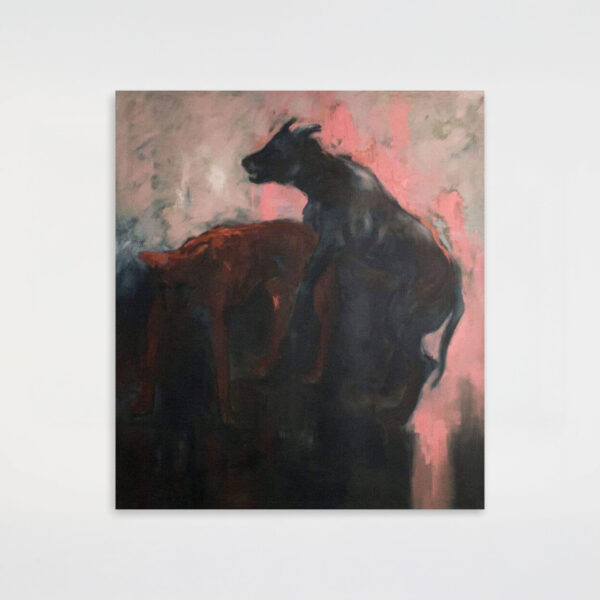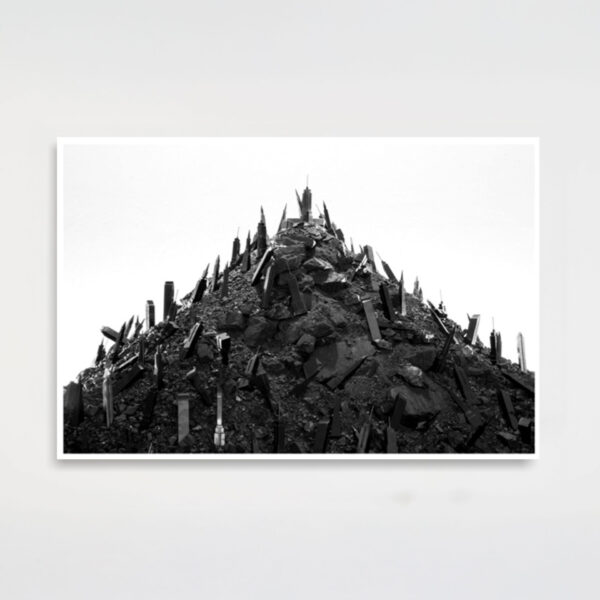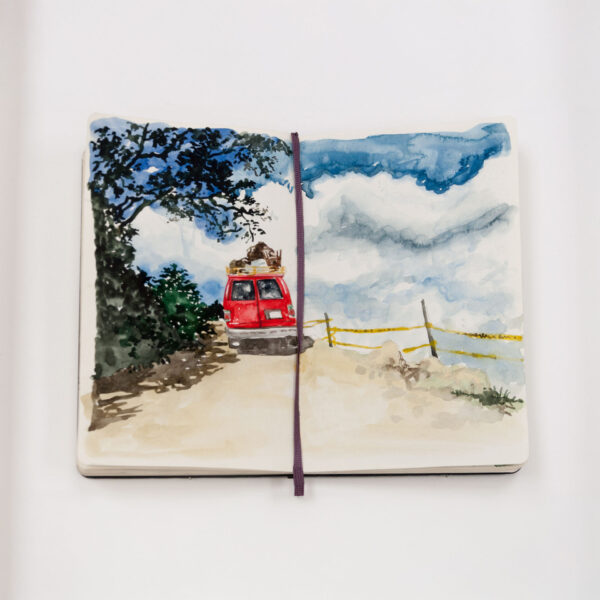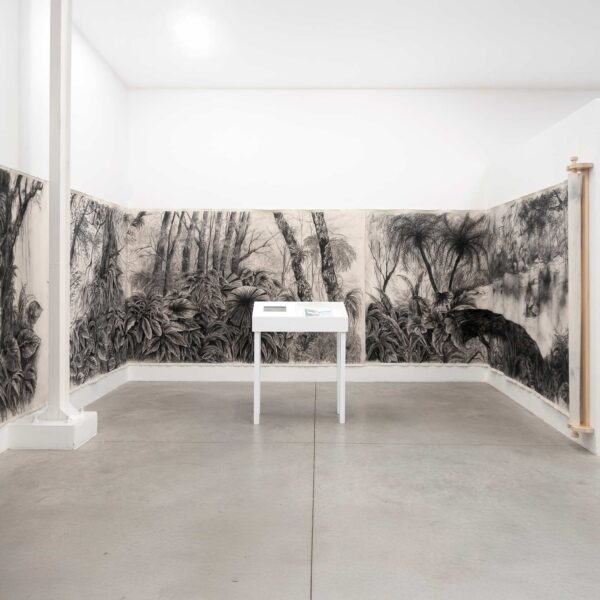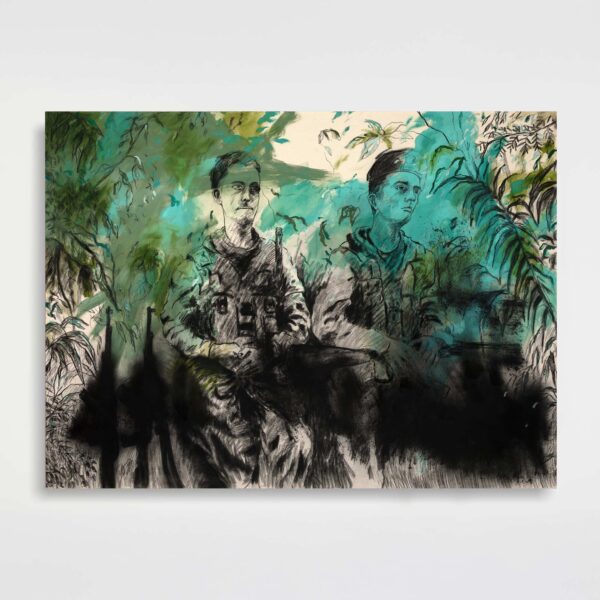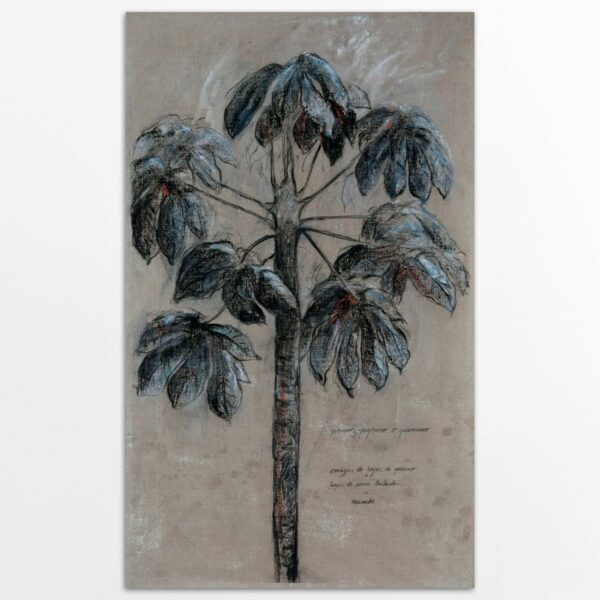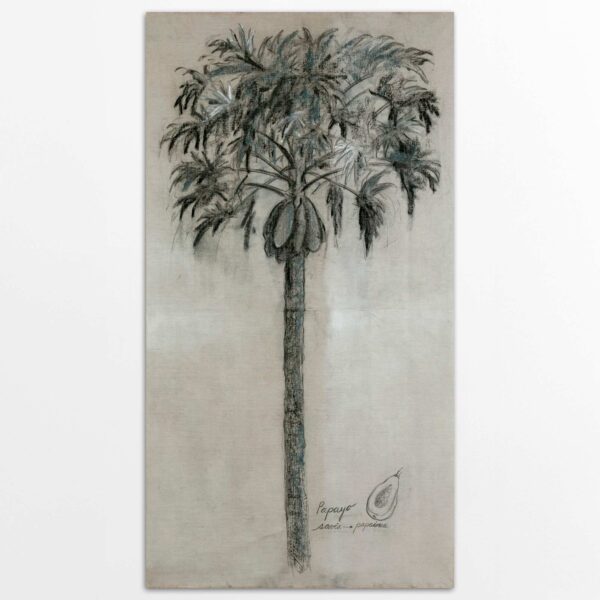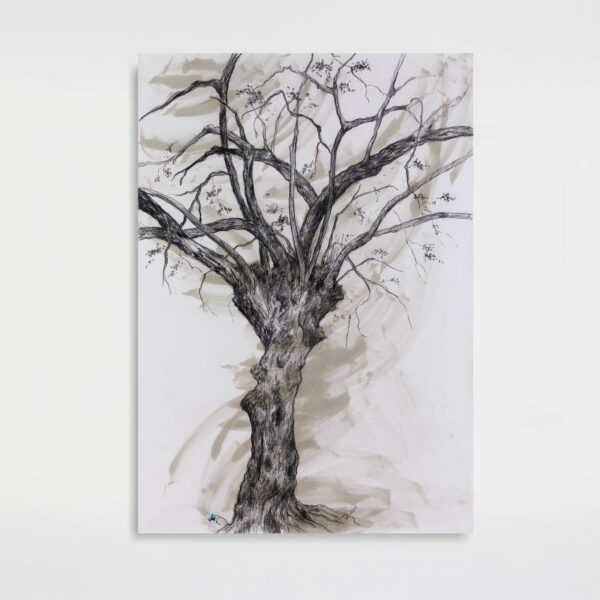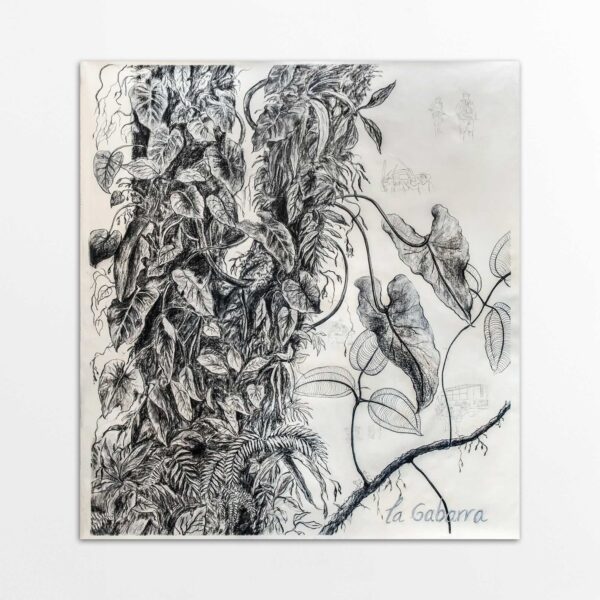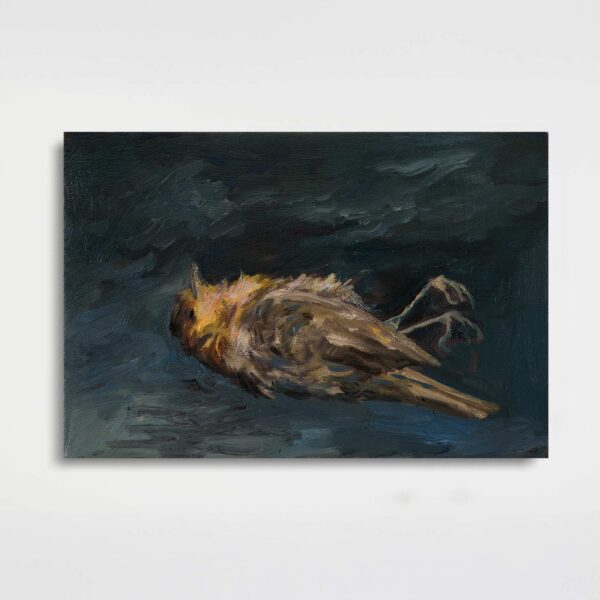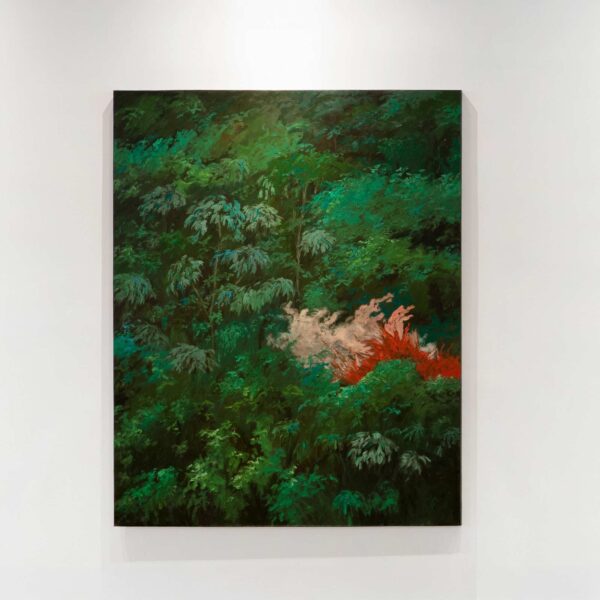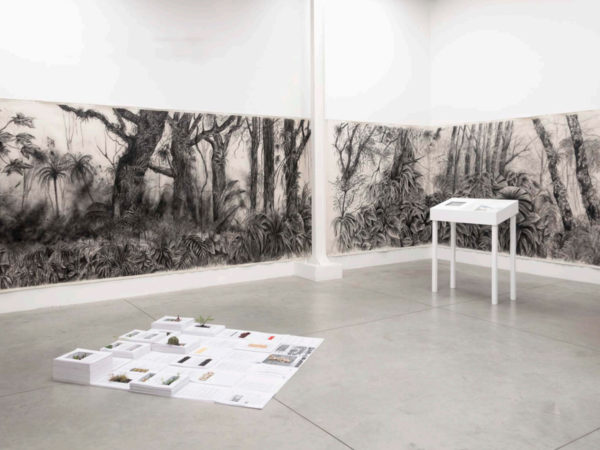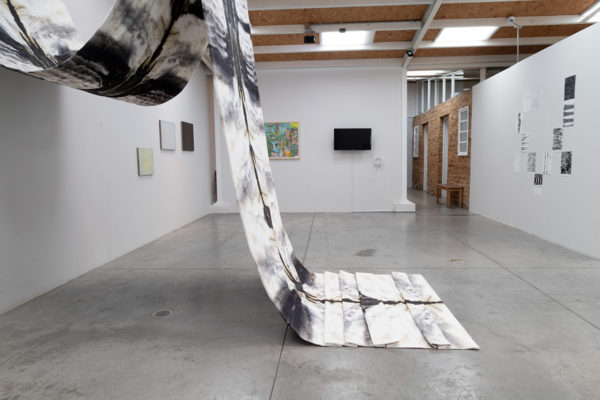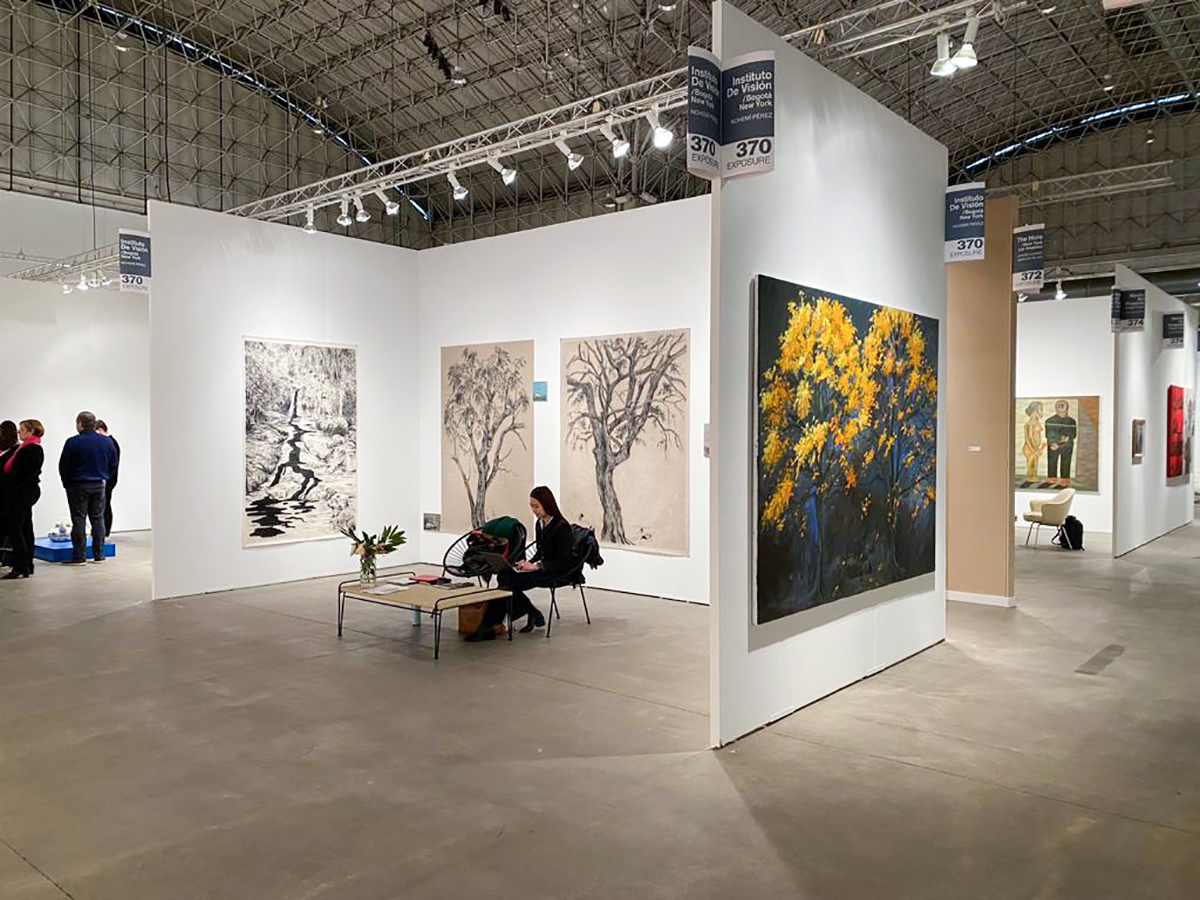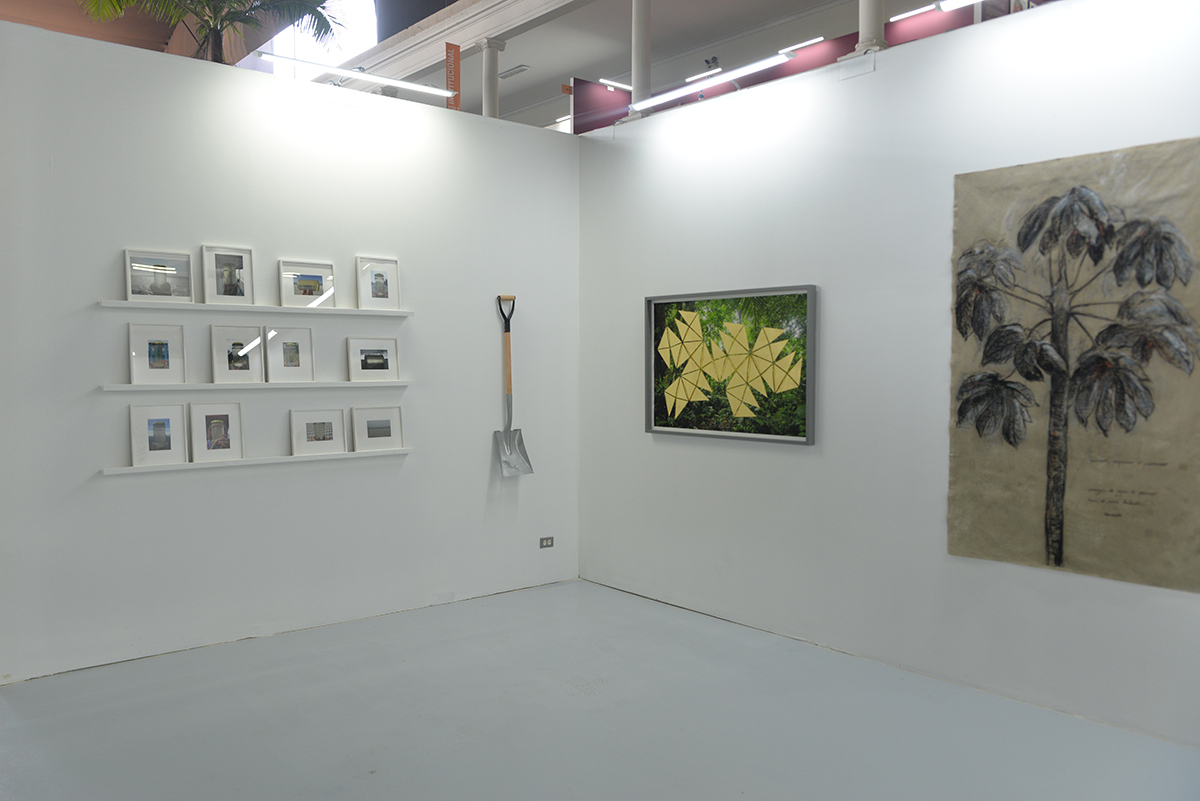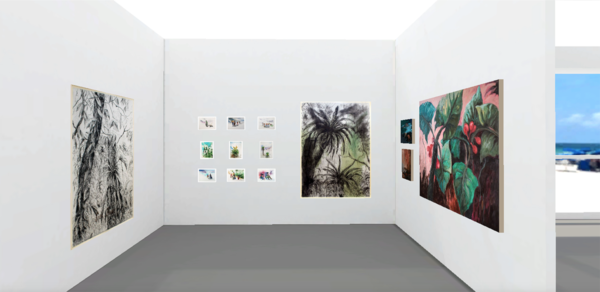
Nohemí Pérez’s multidisciplinary practice—spanning drawing, embroidery, and painting—offers a sustained meditation on the fraught entanglements between territory, identity, and historical memory. Rooted in the Catatumbo region of northeastern Colombia, a richly biodiverse yet geopolitically volatile borderland, her work emerges from the intersecting legacies of colonization, armed conflict, forced migration, and cultural hybridity.
Working primarily in charcoal on fabric, Pérez constructs monumental panoramic landscapes that envelop the viewer in dense, emotionally charged environments. Her visual language draws on the 16th-century European tradition of the panorama, historically deployed as a tool of colonial spectacle to depict exoticized territories for imperial audiences. Reclaiming this format, Pérez disrupts its ideological function, deploying it instead to render visible the ecological, political, and emotional complexities of a region often overlooked or misrepresented.
In her acclaimed Panorama Catatumbo series, Pérez integrates subtle narrative scenes into vast jungle settings—vignettes that reveal illicit economies, military presence, and environmental devastation. These embedded narratives, nearly camouflaged within the landscape, mirror the lived experience of those inhabiting these contested territories, where visibility and erasure are in constant tension.
Her use of charcoal—drawn from a material deeply tied to the region’s extractive industries—functions as a formal choice and a conceptual anchor, linking medium to message. Interventions of thread and embroidery further articulate an aesthetic of fragmentation and repair, referencing both gendered labor and the ecological violence inscribed upon the land.
While Pérez’s subject matter addresses urgent socio-political realities, her approach is deeply sensorial, oscillating between the lyrical and the stark. Through this tension, her work transcends documentary representation to offer a profoundly affective cartography of place that insists on the enduring entanglement of body, land, and memory.
Her work has been exhibited internationally in major institutions and is increasingly recognized for its critical contribution to conversations about decolonial ecologies, feminist geographies, and transnational aesthetics.
